Stan Winston was a wonderful husband and parent as well as a creature designer, special effects maestro, make-up artist, director, and producer. Let’s just say he was one of the world’s finest special effects wizards.
Stan provided us creatures based on special effects and touched with visual effects at a time when technology has made everything possible but left nothing distinctive. Stan was never afraid to challenge conventional wisdom; it’s a well-known fact among movie buffs and even filmmakers that a guy in a suit would never be as good as an animatronic monster or a computer-generated creature.
Stan’s Predators, on the other hand, are just men in suits, and do we really need to tell you about their status as pop cultural icons? We’d never have guessed that The Relic’s Kothoga is actually a man in a suit model if it hadn’t been for the behind-the-scenes information. His talents and great creativity earned him four Academy Awards for Aliens, Terminator 2, and Jurassic Park.
Stan Winston’s characters and creatures in these three flicks are just the tip of the iceberg that is his legacy. In 1972, he established the Stan Winston Studio. After Winston’s untimely death in 2008, his family established the Stan Winston School of Character Arts to keep his artistic fire burning by inspiring future minds to follow in Winston’s footsteps.
In addition, Shane Mahan, John Rosengrant, Alan Scott, and Lindsay Macgowan, his four supervisors who worked on numerous projects with him, created their own business and named it Legacy Effects in his honour.
We’ll walk you through the ten most scary yet exquisite creatures Stan Winston designed and brought to life in this video. On the 15th anniversary of his death, it’s a modest mark of gratitude for this great creature wizard. The monsters in this list were chosen by Marvelous Video’s crew through a voting process.
Pumpkinheads—from the film Pumpkinhead (1988)
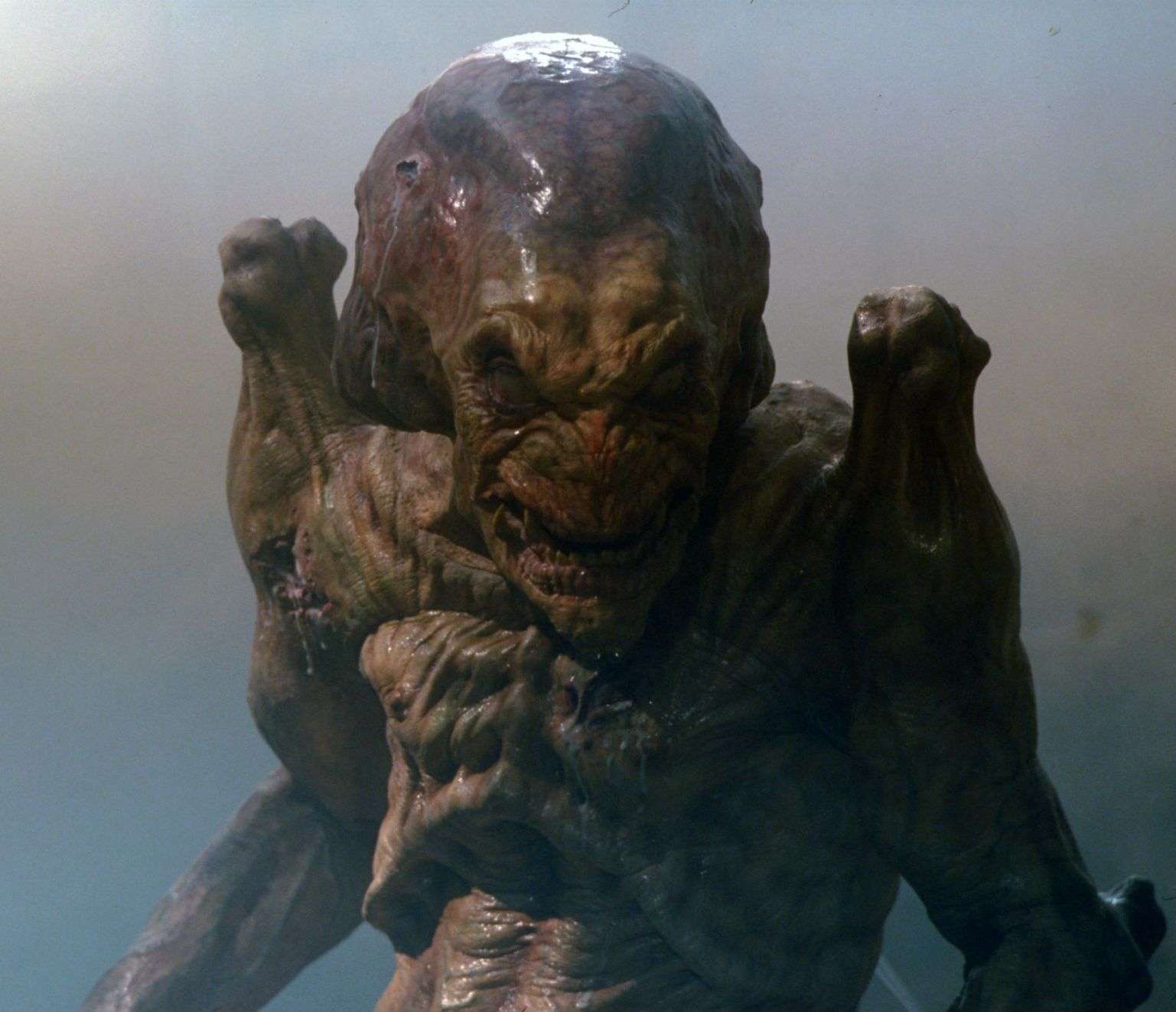
The main antagonists in the Pumpkinhead series are Pumpkinheads. They are vengeful demons that can be called to exact vengeance. You didn’t suppose Stan Winston would make a creature with a carved-out pumpkin for a head, did you? They get their name from the fact that they are buried beneath a massive pile of pumpkins.
The structure of these demonic creatures is roughly humanoid, and the texture and feel of their bodies are sarcastic. They resemble a huge foetus while simultaneously resembling a dead decomposing body.
They have overgrown shoulders that end on thrust-up shoulder blades, disproportionately long legs, skeletal fingers with claws for nails, and an agile tail. Their head looks like the body of an octopus with sharp carnivorous teeth and pale reptilian eyes.
When the producers contacted Stan for the film, they were just looking for him and his studio to design the titular creature. However, Stan saw the opportunity to make his directorial debut. So he put a condition that he’d do the creature only if he did the film itself, and the producers fortunately agreed.
Stan employed his studio to create the design and develop the monster. The designers would come up to Winston after each level of progress, and he’d make suggestions. Alec Gillis,Tom Woodruff Jr. and John Rosengrant sculpted the body after Winston finalized a design, and it was cast on foam latex for a lighter weight then painted. They used translucent resin to make Pumpkinhead’s claws.
The creature’s legs were originally going to be Predator legs, but the design was scrapped since the feet were digitigrade and unsuited for a species that had to run a lot. Stan Winston’s talent in the physical aspects elevated this low-budget monster to the level of Aliens and Predators.
Yautja—from Predator
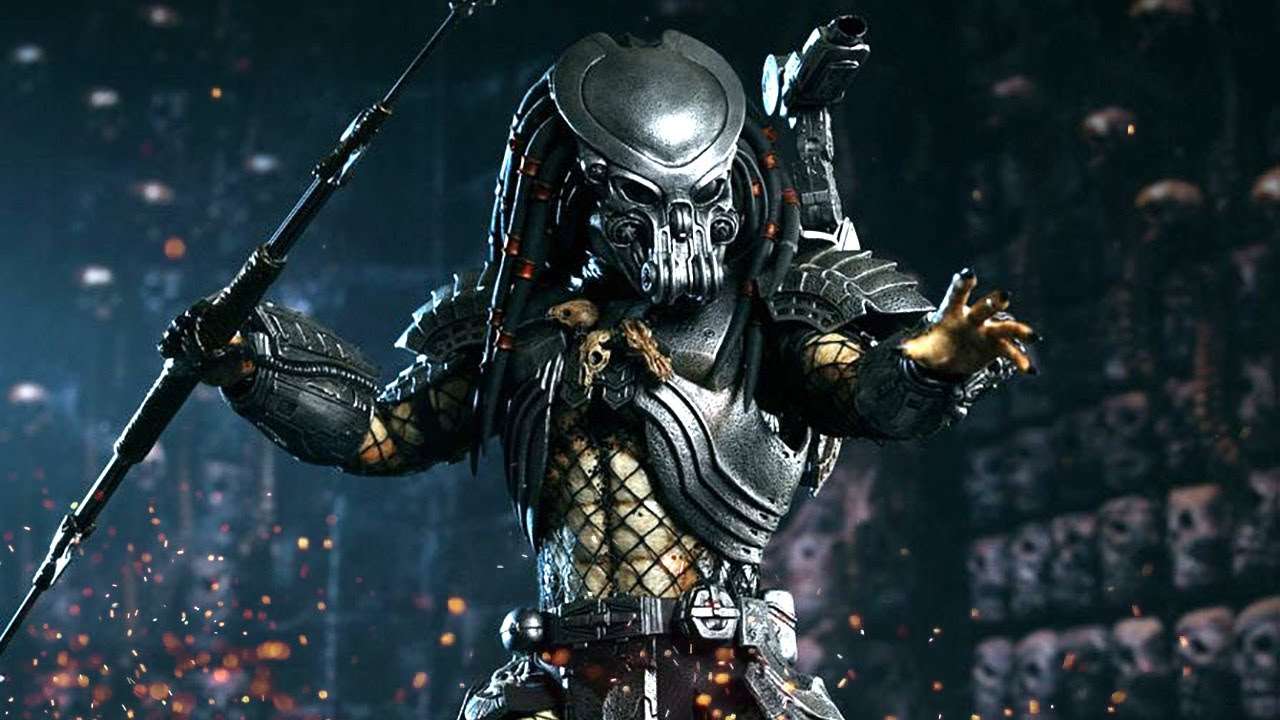
These horrific animals are alien species that can only be compared to the Xenomorphs in terms of ferocity. Their insectoid heads are normally protected by armour, their faces are covered in little pincer-like hair, and their mouths have two sets of jaws and a snake-like dual-ended tongue.
The Yautja are apex predators with rough reptile skin who murder for fun. They are usually seven to nine feet tall. Their blood, on the other hand, is a bright green liquid. These characteristics make the Yautja attractive, yet beauty is in the opinion of the beholder.
Steve Johnson and Boss Film Studio were hired to bring the Yautja to life; however, the design that they created was not as mobile as director John McTiernan had envisioned and they were fired. It immediately led to the search for new creature designers.
Arnold Schwarzenegger recommended his old friend Stan Winston and the producers agreed. Stan took up the project but it was an ambitious one, and the most significant challenge remained the small deadline of six weeks. Stan didn’t want to pick up from where his predecessors left but instead redo the creature from scratch.
Stan started drawing the design and his initial inspiration came from a Rastafarian warrior. Because of the tight schedule, he’d draw practically anywhere he got the chance. Aliens had already been released by then and he was flying to Japan with James Cameron for a symposium.
It was in that flight that Cameron told Stan that he always wanted to see something with mandibles.Stan incorporated this in his drawing to give the world’s most famous mandibles ever.
After the design was finalized, it was time to make the preliminary sculpture. The gigantic 7 foot 4 inch tall Kevin Peter Hall was to play the Predator; Kevin was known to not just don the suits but really bring a personality to the characters he was playing.
Stan and his colleagues built a movable yet terrifying beast that was framed to Kevin’s proportions. The paint job, on the other hand, was the most crucial aspect. The precise and intricate painting done on the foam latex body gives Yautja his thrilling and stunning appearance.
Finally, for further flexibility, the lower mandibles were fitted with an external servomotor that motion-controlled them, allowing Kevin’s jaw movements to reverberate and reciprocate in a complementary movement to the mandibles.
Gillman – The Monster Squad
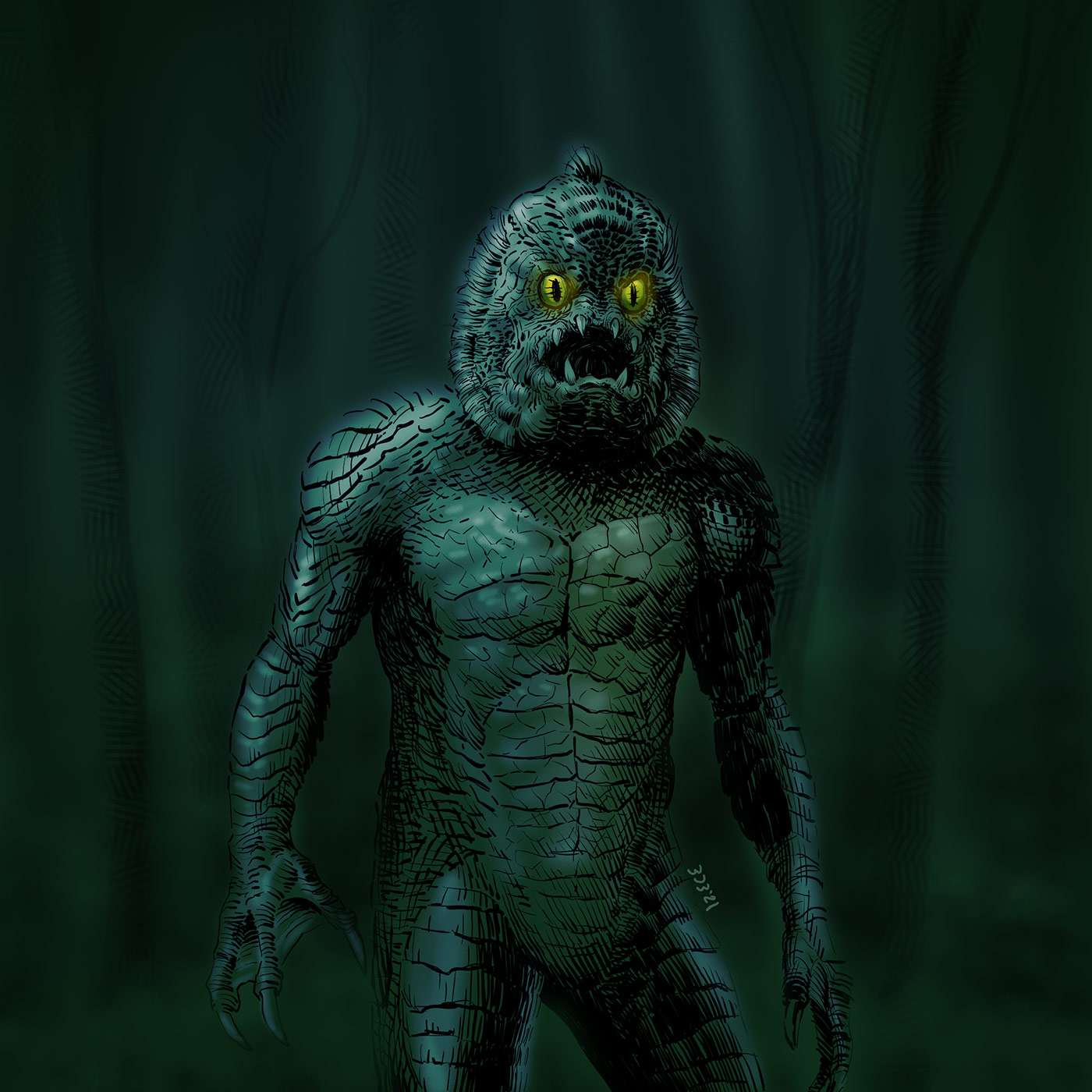
The Gillman is a legendary film monster that has influenced many modern directors and creature designers. He is a humanoid with fish-like characteristics, including webbed hands with sharp claws on the points of each finger and the ability to breathe comfortably both within and outside water.
His skin is scaly, yet it is exceedingly tough. Gillman’s most distinguishing trait, though, is his head. It has large fishy eyes and a fin over its head and is covered in fish scales. His jaws and nasal cavities include several sharp teeth that mimic those of a crocodile.
Gillman makes an appearance in the 1954 picture Creature from the Black Lagoon. Guillermo del Toro’s 2017 film The Shape of Water was heavily influenced by the monster.
Tom Woodruff, Jr. played Gillman and he was also a part of Stan Winston’s designing studio. Way before The Monster Squad had landed on Winston’s doors, Tom had built a gorilla suit for his own amusement and pleasure.
When Tom heard about Gillman, he showed the suit to Winston and pitched really hard to convince Stan into letting him play Gillman. Without much ado, Stan happily agreed.
Surprisingly, Winston already had a design in mind for Gillman and he was supposed to be largely alien with foreign and ancient features, but being the good boss that he was, he let Tom move ahead with his ambition.
The maquette was sculpted by Matt Rose, and the lifecast was created to Tom’s specifications. She also painted the final design, and Winston’s vision had brought one of the film’s most famous figures to life—an amazing old pastime and Winston’s insight.
The Queen of the Lair – She Creature
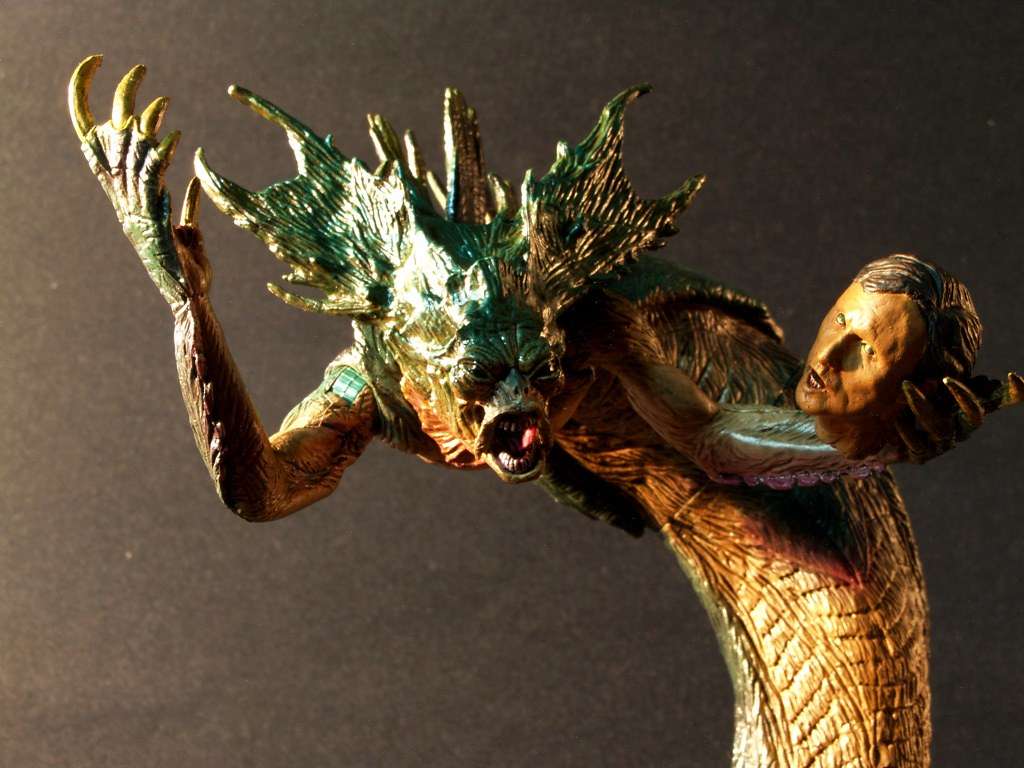
Stan Winston’s first project after starting his own production company was a collection of straight-to-video pictures for HBO, one of which was She Creature. To bring the titular ever-evolving mermaid to life, Stan Winston Studio was naturally engaged as the Special Effects Company.
Stan made sure she didn’t look like a woman in a mermaid suit because she was an extraordinarily organic and natural creature. The mermaid’s first form was performed by RyaKihlstedt.
She has webbed hands and long hair with algae-like reflective coloration. Of course she had a powerful and agile split tail. Towards the climax, she reveals her true form as a monstrous and abyssal creature. In this form, she has transformed into a largely skeletal and beastly monster with a crown-like crest that supports her title of The Queen. Her fins near the tail have sic thorny barbs that she uses as weapons.
The special effects team was working on a tight budget and a tighter pre-production schedule of three weeks. At the first stage of picturizing the mermaid, Rya would get a make-up job for three straight hours; her webbed hands were prosthetics that were cast on latex and worn as gloves. In most of the scenes, she is seen in a fish tank.
It wasn’t there just for cinematic purposes but was specially designed to hide the heavy pieces of equipment and mechanisms. The long mechanical tail was extremely innovative and one person would move it from beneath the fish tank. One of the sequences shows The Queen in full view; this was done by digitally combining Rya with an animatronic tail.
The Queen goes through a transformation to finally reveal her true form, and this final design was created by Mark McCreery. Separately, the body and head were sculpted. While the design and final creature were both terrifying, they had a vintage feel to them. Hannah Sim, an actress and dancer, played the ultimate form.
Wearing the cast of this iteration needed a lot of muscle, but Hannah handled it gracefully. Stan Winston and his team created the world’s most stylishly malevolent mermaid, who slithered like an eel.
T-800 – The Terminator
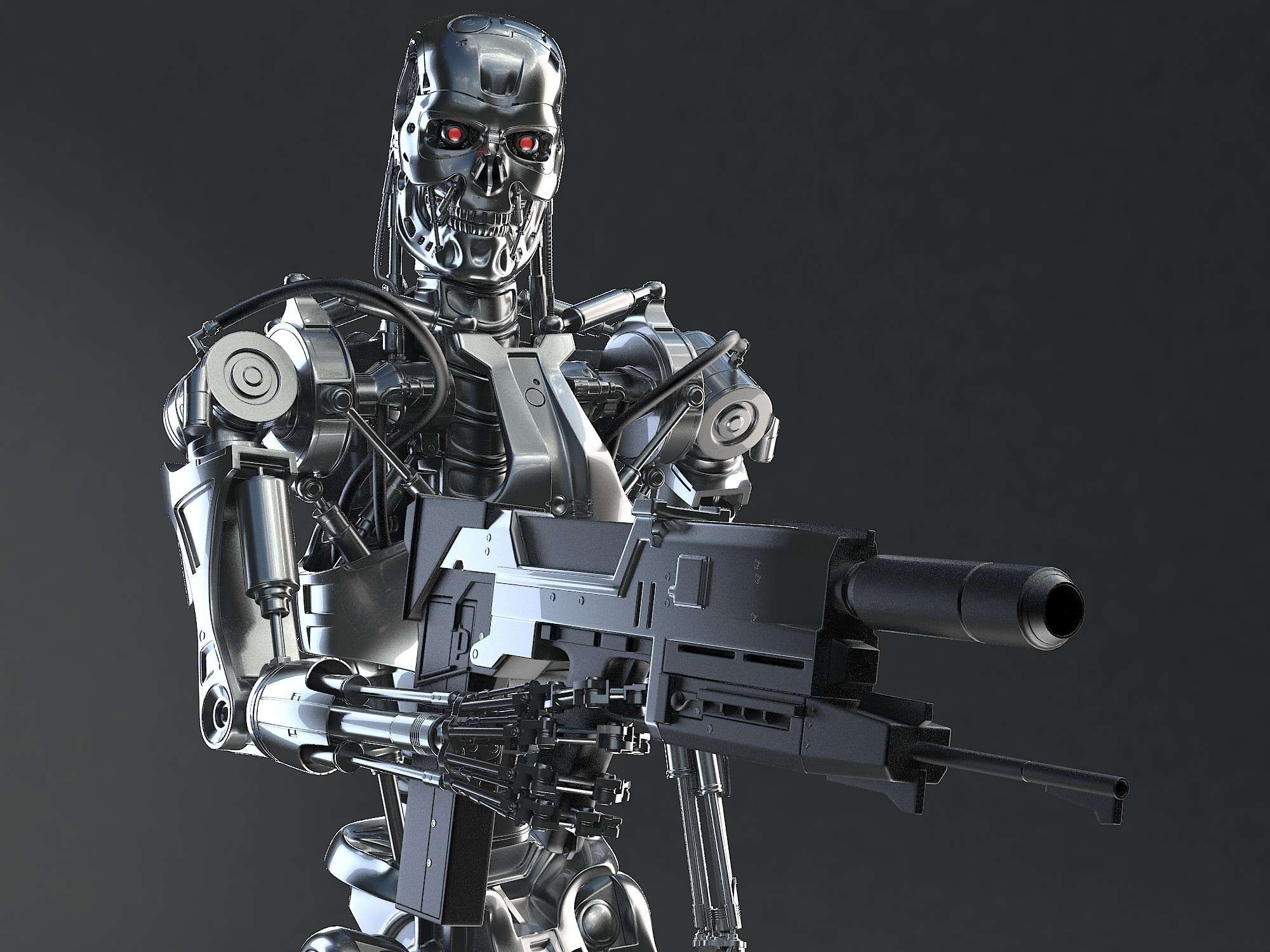
The T-800 is a Cyberdyne Systems Model 101 android with a metallic endoskeleton encased in live tissue. Director James Cameron revealed that there are 101 models of this kind of Terminators, all of which appear to be identical, and a 102 that appears to be identical to someone else.
It’s a super-strong robot with the ability to repair, upgrade, and learn. It can even sweat, smell, and bleed due to its organic disguise, but it doesn’t show human emotions until it learns them from a subject.
It can mimic other people’s voices in addition to humanised qualities like conversing naturally and reading human handwriting. However, its most advanced feature is its constantly adaptive Artificial Intelligence.
The model of T-800 was improved heavily between the first two terminators, and it is only wise to bring you a comparison that focuses on the improvements made. TERMINATOR 2: JUDGMENT DAY introduced the brand new T-1000 but James Cameron and Stan Winston were determined to bring heavy upgrades to the T-800 model.
Stan’s studio was initially using plastic to make the endoskeleton which they would paint to get a metallic look and finish. However, they moved to actual chrome for the second movie, this material granting them a more authentic metallic look. Also, its heavy durability reduced the constant chipping that Cameron was facing with plastic.
Stan also used highly advanced technology to ‘re-create life’. Numerous maquettes of Arnold’s face and head were designed and it all seemed like Stan Winston was transforming a piece of technology in an army of Arnolds.
We as an audience would be able to see much but from an artistic standpoint of a creature creator, this new T-800 was a marvel; it could do more in terms of movement and flexibility. It was also able to have a more fluid and effortless walking and running.
The model, on the other hand, was maintained and controlled by a crew of twelve puppeteers who stood behind the cameras, synchronising and controlling every movement of the model’s body, from the cranium to the feet. The amount of time and effort that goes into creating these stunning works of art and technology is astounding..
Kothoga – The Relic
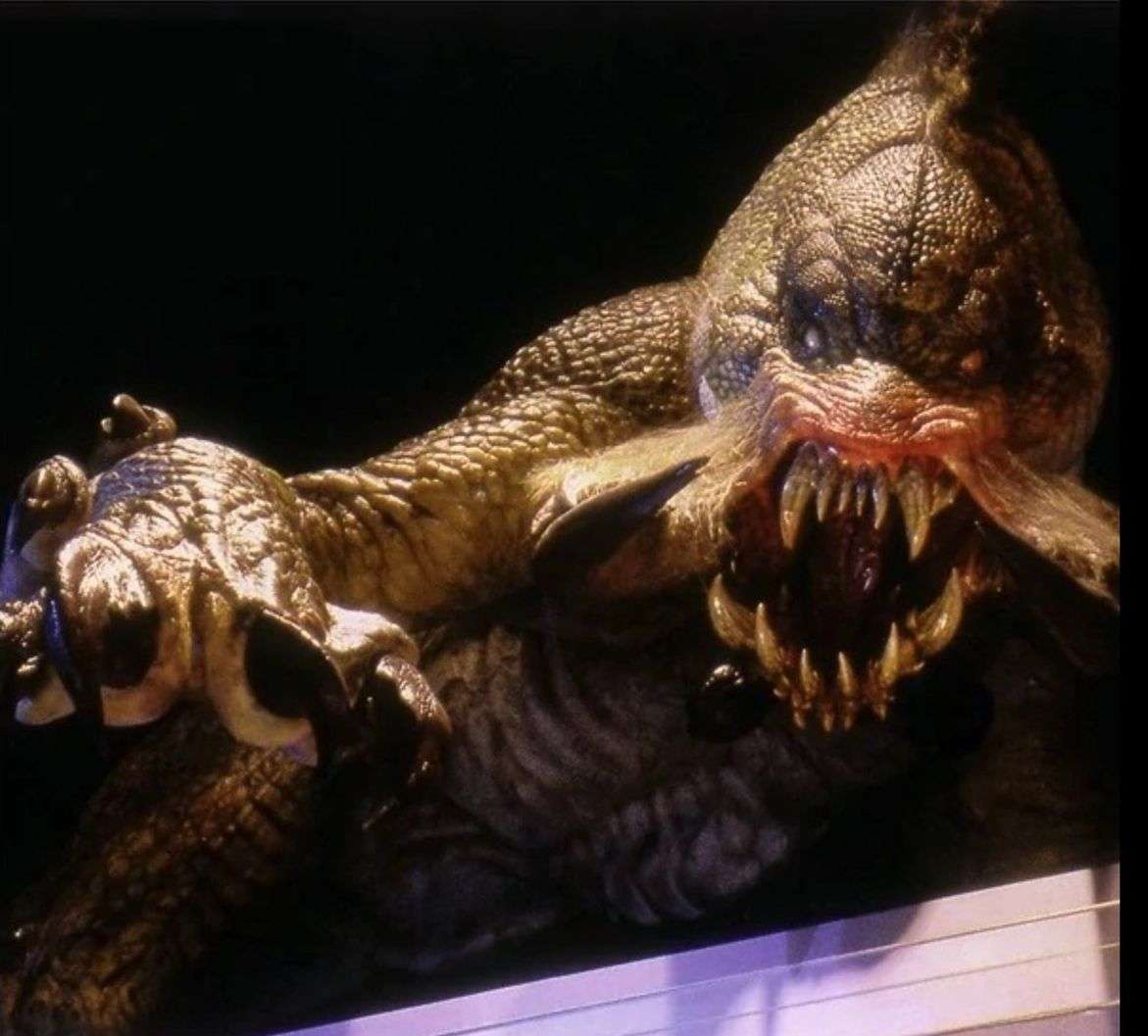
When an anthropologist travels to South America, he participates in a Kothoga tribe ritual. Later, the virus transforms him into a massive beast that resembles a hybrid between a crocodile and a gorilla, but closer inspection reveals additional animalistic influences.
It walks on all four legs, has a humped back, scaly skin and eyes, and a terrifying visage. Its head resembles a big spider’s body, with roughly 40 fangs of various sizes. It has a lion-like mane that extends the length of its body. The two massive mandibles extending from either side of the lower jaw are, nevertheless, the most noticeable characteristic.
The film is based on a novel by Douglas Preston and Lincoln Child called Relic, and naturally, the inspiration for Kothoga came from the novel. The first problem that the designers at Stan Winston Studio faced was portraying it on paper.
Since the book didn’t do much in terms of describing the physical appearance of Kothoga, it was unseen and unimagined. That’s when the lead concept artist Mark McCreery presented a plethora of designs to director PeterHyams. Initially, the designs were made to look brutal but elegant, you know, something like a tiger. It will definitely kill you and yet you cannot help but appreciate its beauty and elegance.
Hyams, however, wanted his creature to look more grotesque and repelling, so he suggested McCreery with the idea of using the spider motif. McCreery obliged and the final design was an amalgamation of a lion’s mane, a horse’s build, a crocodile’s posture, and a spider’s head.
Stan Winston made sure that the creature looked natural and something on the lines of a mutated organism. So, while the Kothoga was being sculpted, attention was given to make its hair, claws, skin, teeth, and mandibles look alive in themselves.
The Kothoga was not designed with the intention of containing a man, but due to cinematic commitments, Vincent Hammond was cast in the role. As a result, a cast was produced of him wearing the limbs and head, which would serve as the foundation for the final sculpture.
Because of the awkward animalistic stance, it was extremely difficult for a performer to wear the Kothoga outfit. The end result, though, was spectacular..
Hell Knight – Doom
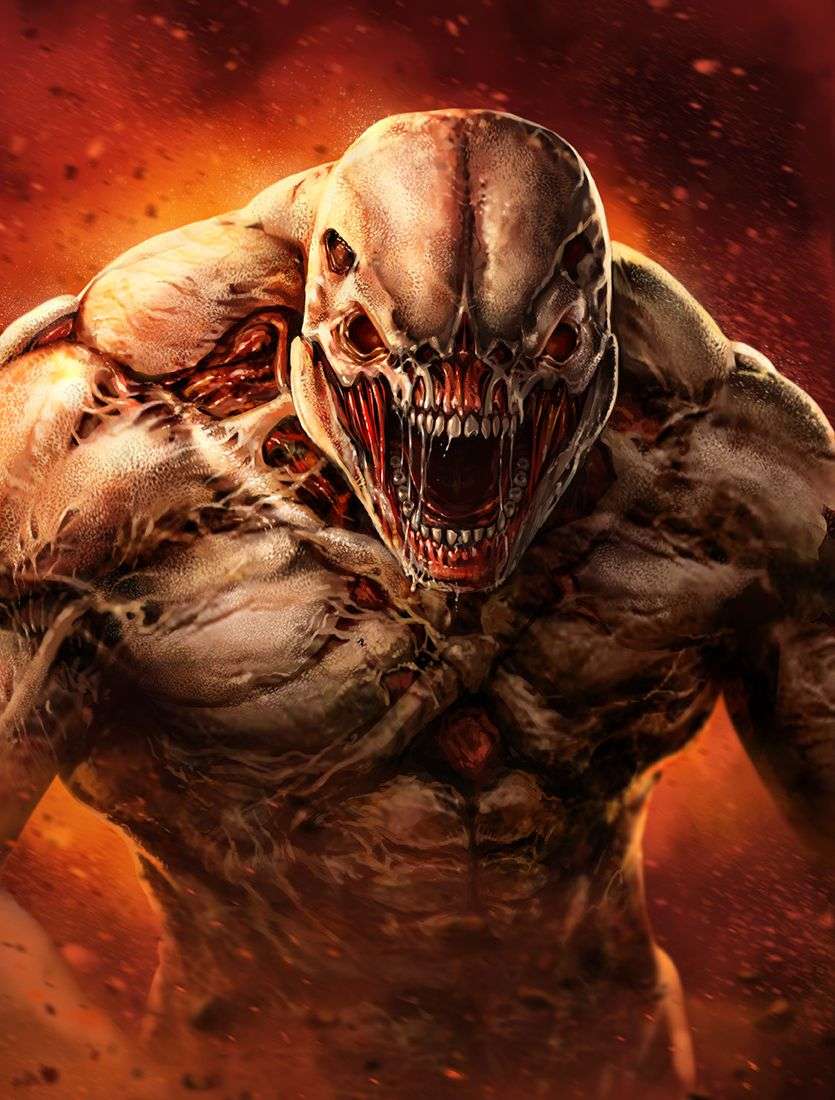
Doom is based on the id Software computer game series of the same name, but it heavily borrows from the 3rdentry. The Hell Knight, also known as The Baron, is a monster who has been wreaking havoc on a Mars research facility.
He has the size of a dump truck and is just as powerful. He’s a skinless freak with visible veins and tissues all over his body. He has a humanoid head but no facial features such as a nose, eyes, or ears. The heavily-teethed mouth is the only humanoid feature on his skull.
The team at Stan Winston Studio made sure that the Baron suit did not look like a big fat foam jacket moving around. Although his body was muscular, it was necessary that the suit was lightweight and allowed articulation. When creature performer Brian Steele wore it, he was surprised with how mobile and strong the suit was.
Interestingly, different heads were crafted for different purposes. One head was made only to be burnt in one of the sequences, while another was created combining the burnt look with peeling skin. There was also a hero head with a servo-controlled motion to manage movements around the mouth and face.
The picture didn’t do as well as it should have, but the portrayal and cinematization of Hell Knight delighted enthusiasts.
Xenomorph Queen – Aliens
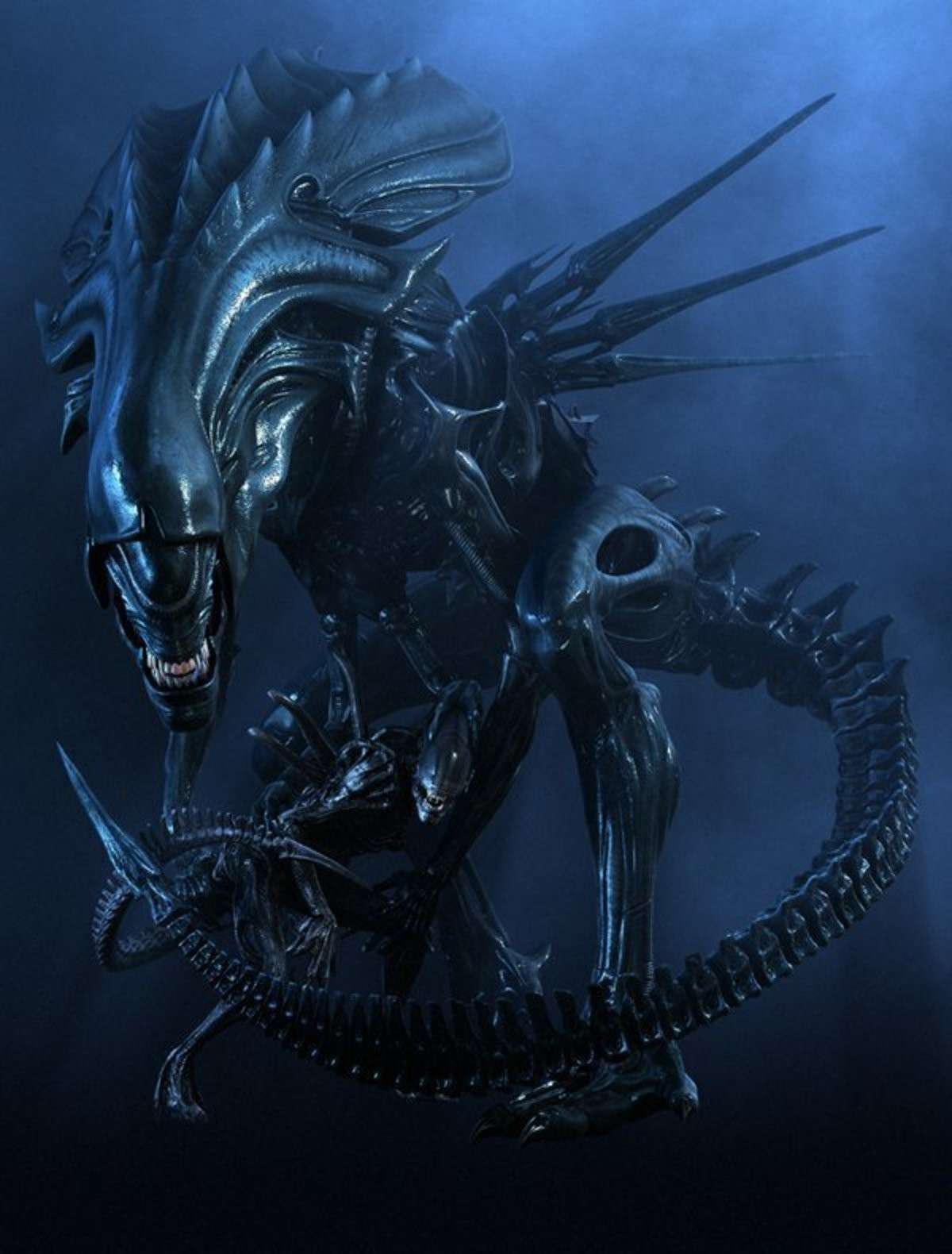
“The ALIEN QUEEN glowers over her eggs like a vast, glittering black Insect-Buddha,” James Cameron says. She possesses a fanged head, four powerful arms, and two powerful legs that are folded over her egg-filled tummy. Her crest resembles a crown and is befitting of her monarchy.
She is the mother of all creatures and the ultimate xenomorph, doing whatever she can to protect her progeny. Except for Stan Winston and his team, no one could match the terrifying grace that this colossal beast demanded.
Cameron made heavy use of stop-motion animation in The Terminator, but in helming Aliens, he also noticed the great things Stan Winston could do with puppets. This led Cameron to see the ambitious dream of shooting a life-size queen that would interact with the actors only by the use of puppeteering.
However, it was not an easy job to bring to life a 14-foot tall puppet. In a never-done-before style of puppeteering, it was decided that a crane would suspend two men who would fit inside the giant Queen’s torso and control the movement of her four arms while the other movements would be controlled by external rods, wires, and hydraulics.
Initially, Stan thought this was a very radical and impractical approach, but Cameron’s vision motivated him. After the design was finalized and the maquette made, Stan’s team went to London, where Stan’s British Alien FX crew was waiting.
Part by part, the Xenomorph Queen was brought to life and when she was finally put together, the crew knew she’d go down in history as one of the scariest and most compelling creatures ever. It turned out that she was too massive for standard technology to carry her weight or control her movements, so Stan and his team used another novel technique.
The Xenomorph Queen compelled them to apply the principle of hydraulics, it was something that they had never done before.
The Queen eventually required eight operators to keep her under control; they all coordinated their movements to give her an organic movement style. She was everything Cameron had envisioned and more than the audience had anticipated.
The Tooth Fairy – Darkness Falls
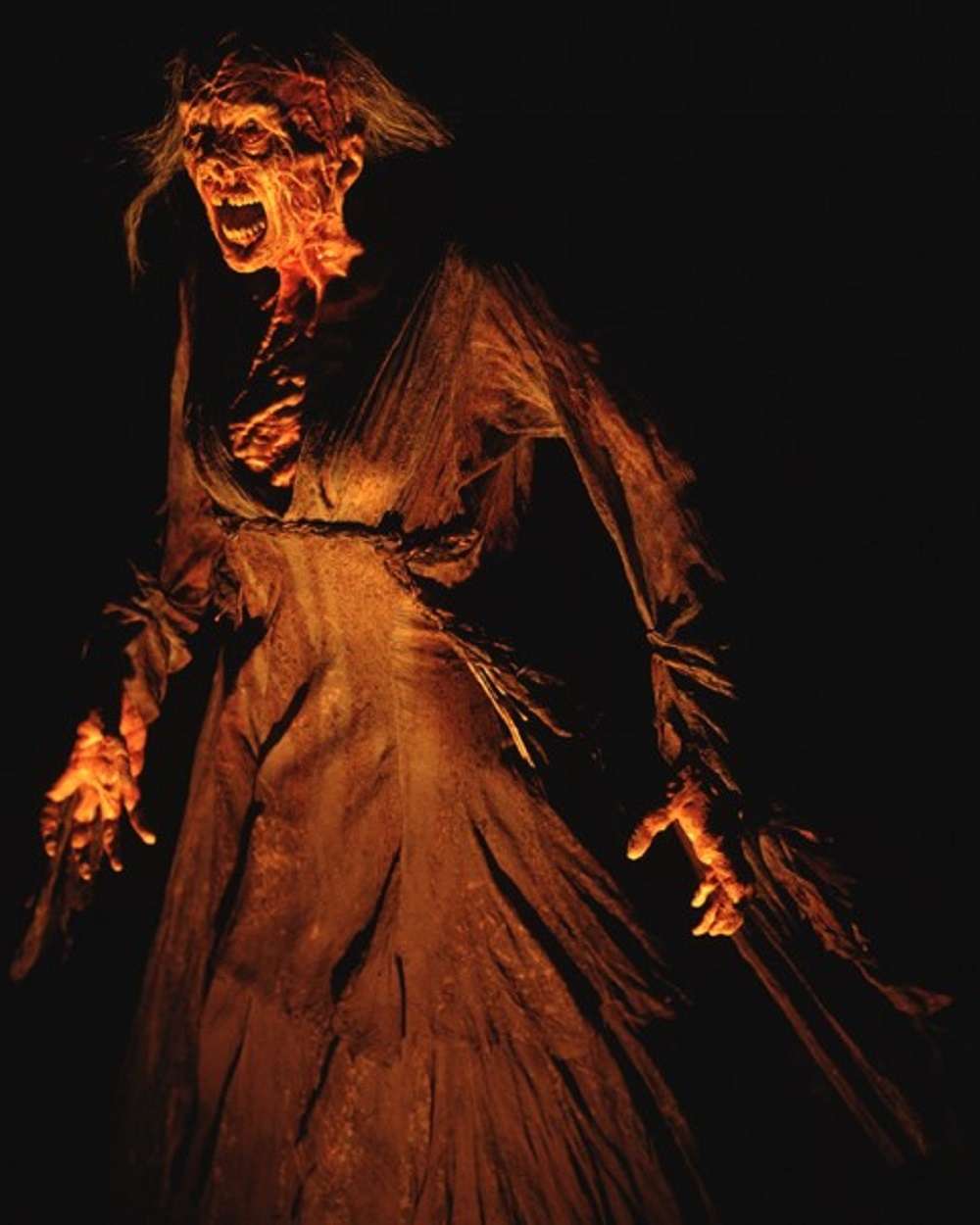
Darkness Falls tells the storey of a single malevolent and unrelenting spirit who haunts a tiny community. The spirit is that of a lady who was badly scarred in a fire and now takes the shape of the Tooth Fairy in order to terrorise her victims. She used to be a lovely widow who was adored by her town’s youngsters.
Her face was damaged, burned, and light sensitive after a fire broke out in her home. She was forced to go out only at night, which raised suspicions among the village elders. The elders hanged her and uncovered her face when two children vanished. She hated the town and swore revenge in her dying breath.
Interestingly, the makers had shot the film but didn’t have a creature. It was only after that they came to Stan Winston to make them a good old scary monster. Even then, they were vague in what they wanted and sought Stan’s suggestion, given his huge experience and extraordinary expertise.
Stan suggested that they keep the antagonist as a real person and not a thing from the otherworlds or, well… a typical demon. According to Stan’s colleagues, Jason Matthews and Richard Landon, the research process was gory and awful because they had to get the inspiration for the burnt lady from books about forensics.
After much thinking and page-flipping, the designers drew something that appealed to Stan. He wanted the character to look as real as another character in the film. A sculpture was carved after the design was finalised.
Then there was the mechanical phase, which involved defining and animating the Tooth fairy’s actions and abilities. These have to match the character’s backstory, plot, role, and director’s suggestions.
Finally, when Tooth Fairy was completed, she looked absolutely hideous but a piece of art, nonetheless.
T-Rex – Jurassic Park
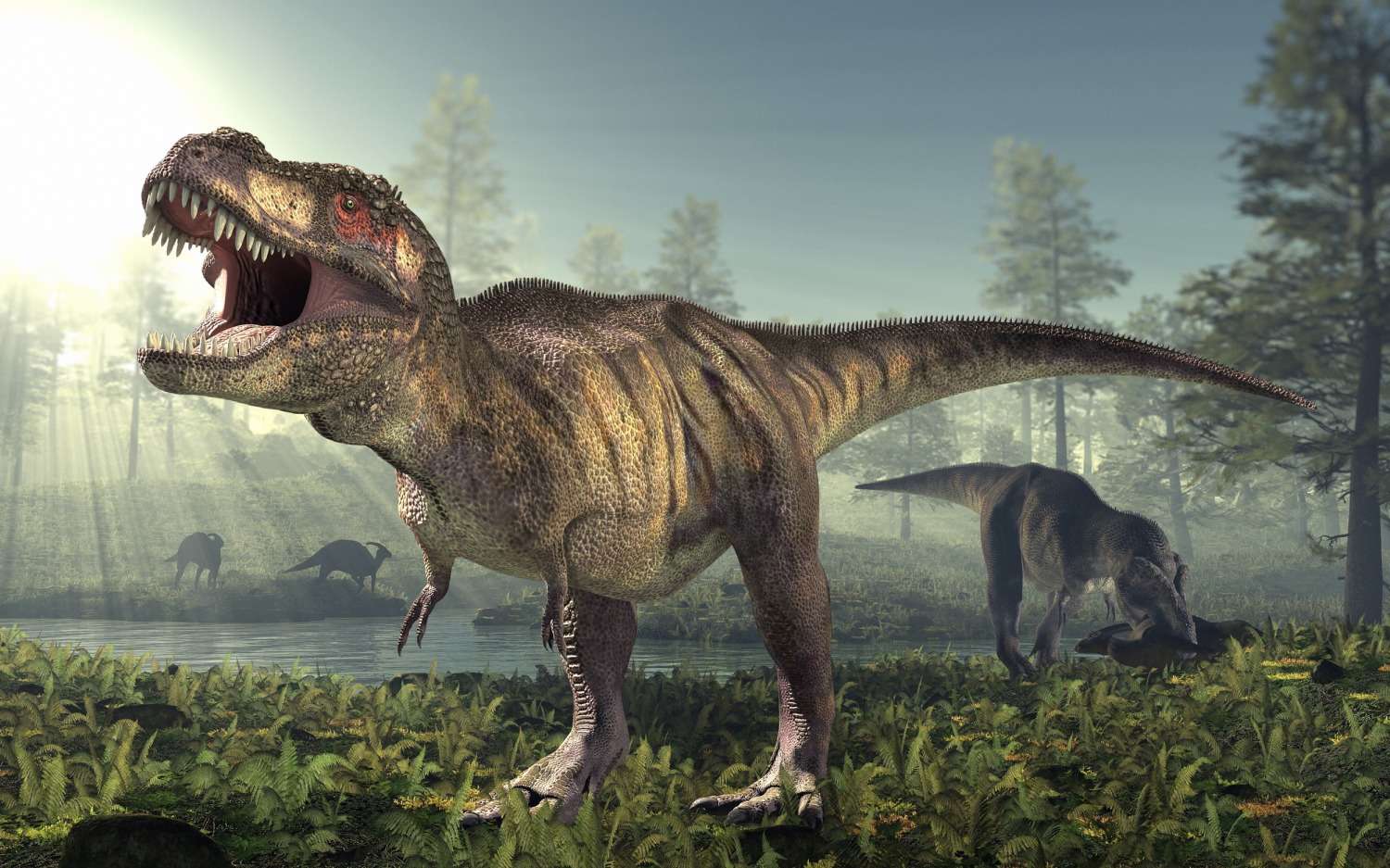
The T-Rex was without a doubt the most popular dinosaur in the first Jurassic Park film. It was a magnificent manifestation of nature’s predatory impulses, despite its low intelligence. This beast would not have become what it was if Steven Spielberg and Stan Winston had not put their trust in each other.
Spielberg was well aware that the dinosaurs, as much as Alan Grant or Ian Malcolm, would be the stars of the show. And, if Stan’s dinosaurs fail, no amount of camera techniques or expert editing will save the movie.
When Spielberg offered the job of bringing the T-Rex to life, both of them knew that Stan had no idea how to, but they also knew that Stan and his team would eventually figure it out, and they did so with relish.
The T-Rex was supposed to be 40-foot long from tip to tail; figuring out how to sculpt this monster and then actually sculpting it was a great challenge. One thing was clear, art was supposed to precede technology in bringing these magnificent beasts to life and giving them an organic and natural appearance.
Ultimately the team came up with the idea of dissecting the entire body of the dinosaur into cross-sections. Then these cross-sections would be projected on plywood using an opaque projector and then scaled and numbered.
These numbered cross-sections were then fixed on a long metal rod and were covered with fiberglass and chicken wire. Finally, clay was used to create it. The one-fifth small maquette and the full-size T-Rex were both sculpted using this method.
Stan and his team demonstrated that the perfection provided by special and animatronic effects could never be overlooked or pushed aside in favour of technological advancements. These people will never go out of business.
